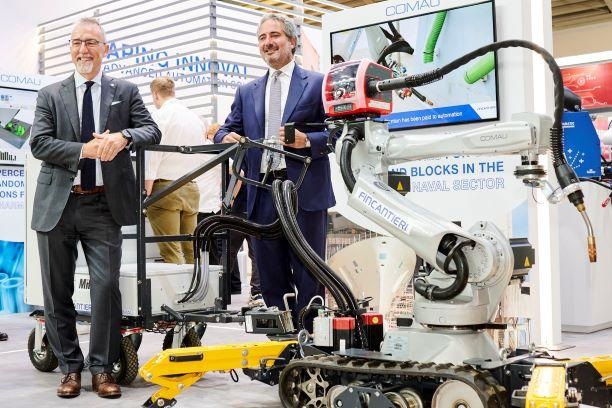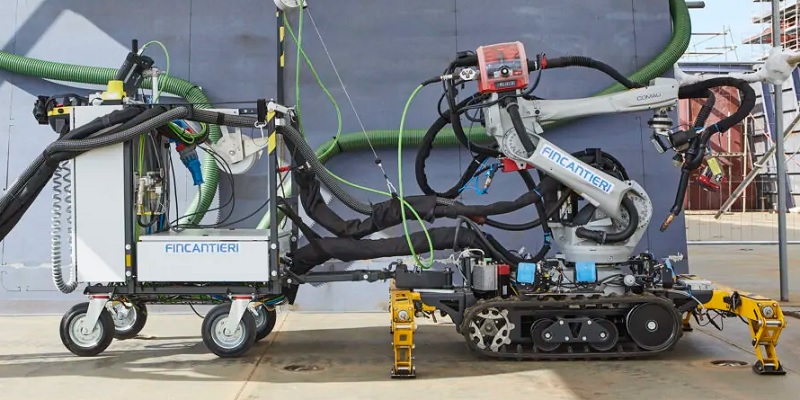Comau and Fincantieri Team Up to Create a Ship Building Robot
In what has been hailed as the first of its kind, MR4WELD, an autonomous mobile welding robot platform, will begin performance testing in the shipbuilding industry.
Comau and Fincantieri have recently renewed a letter of intent signifying their continued development and testing of the Mobile Robot For Welding (MR4WELD), an autonomous welding robot. The MR4WELD is designed to perform welding operations in the shipbuilding industry, with little input from human operators. The initial design was premiered at Automatica 2023.
The MR4WELD Welding Solution
The automated welding robot consists of a six-axis manipulator equipped with a welding torch placed on a set of tank tracks. The robot can roll freely about, using a machine vision system to detect people and objects, as well as identify joints that need to be welded. While welding, the MR4WELD is also collecting key welding data that can be used to improve the efficiency of the operation, determine welding supply usage, and other criteria.

MR4WELD Prototype at Automatica 2023. Image used courtesy of Comau
The partnership between Comau and Fincantieri has been renewed, meaning Comau will continue to design and build robots that will be tested in Fincantieri’s shipbuilding facilities. This way, the robot is tested in a real production environment and useful feedback can be provided for future improvements.
Meeting the Demands for Labor
Skilled labor is in short supply, particularly in trades and building fields. Welders are in high demand, and those who can perform in a shipyard are even more scarce. The MR4WELD is not so much about replacing skilled labor as it is making up for the lack of welders who are on the market.
An unfortunate consequence of having too few welders is that skilled welders must often work overtime. A well-deserved day off can put the whole project behind schedule. With so few welders available, the temptation is to schedule them for longer, harder hours. This increases the chances of a tired welder producing a bad weld or injuring themselves.
Increased Safety in Hazardous Jobs
Building ships can be particularly hazardous work. Falls from height, arc exposure, heavy components, and liquid metal can be some of the largest hazards in the industry. By putting an automated welding robot in the shipyard, these injuries are reduced. The MR4WELD can potentially roll onto narrow supports to perform welding operations, making it a safer alternative than sending a person, even with fall protection, to perform these tasks.

Test application of MR4WELD on a ship deck. Image used courtesy of Comau
Furthermore, some of the tight spaces where welds are required can lead to strain and ergonomics injuries for the human welder. The MR4WELD and its six axes of motion control can easily reach into tight or awkward spaces, once again limiting the risk of injury.
New Industries: Robotics in Shipbuilding
While still in the testing phases, the MR4WELD stands to be a groundbreaking automation project that will benefit shipbuilding operations in the long run. From increased consistency in welds and the potential to reduce on-the-job injuries, MR4WELD is the first such device of its kind.
In the future, the flexibility of this robot means that it may see use in the shipbreaking industry, which is one of the most dangerous jobs on the planet. Between the lax labor standards in countries that perform shipbreaking, the exposure to asbestos, and all of the other dangers associated with running a ship aground and dismantling it, a few automated robots could drastically reduce the number of injuries or deaths in this industry as well.

 Facebook
Facebook Google
Google GitHub
GitHub Linkedin
Linkedin








